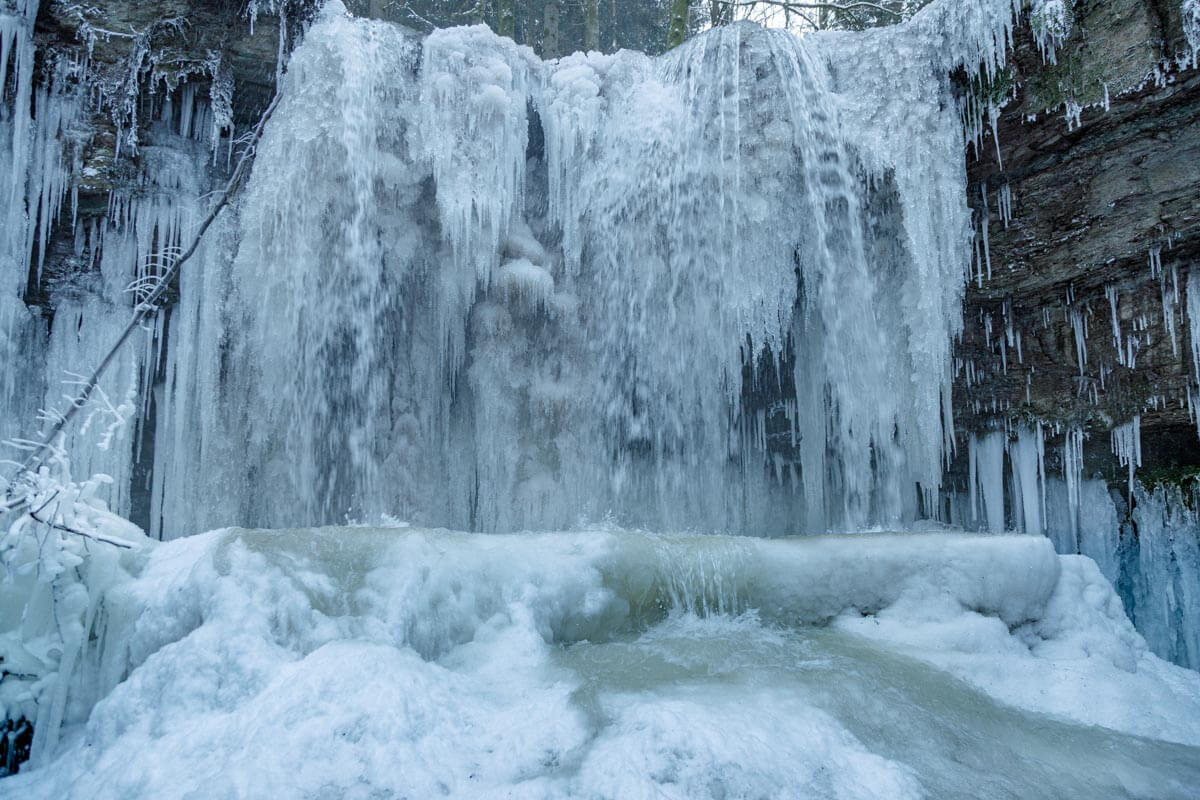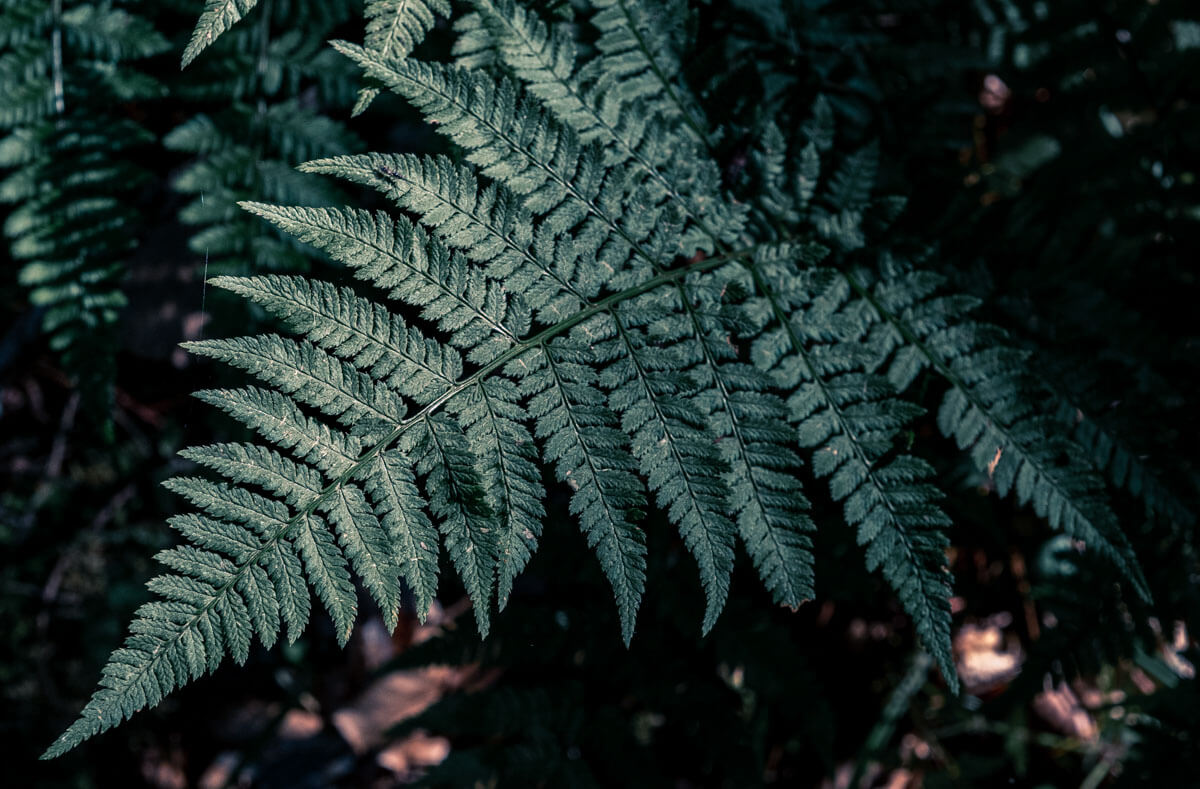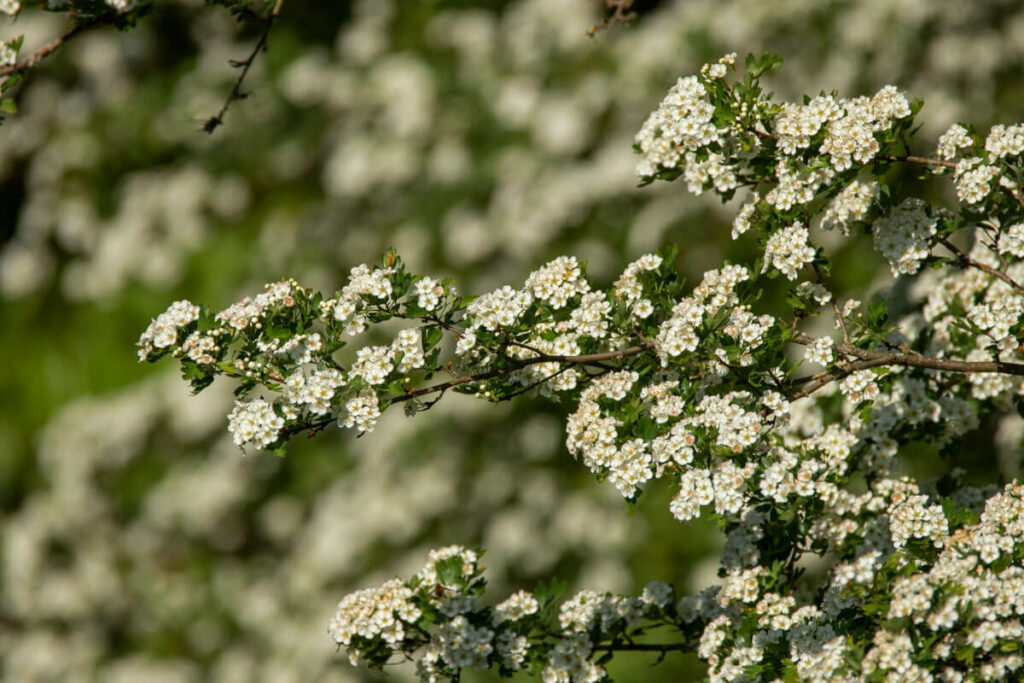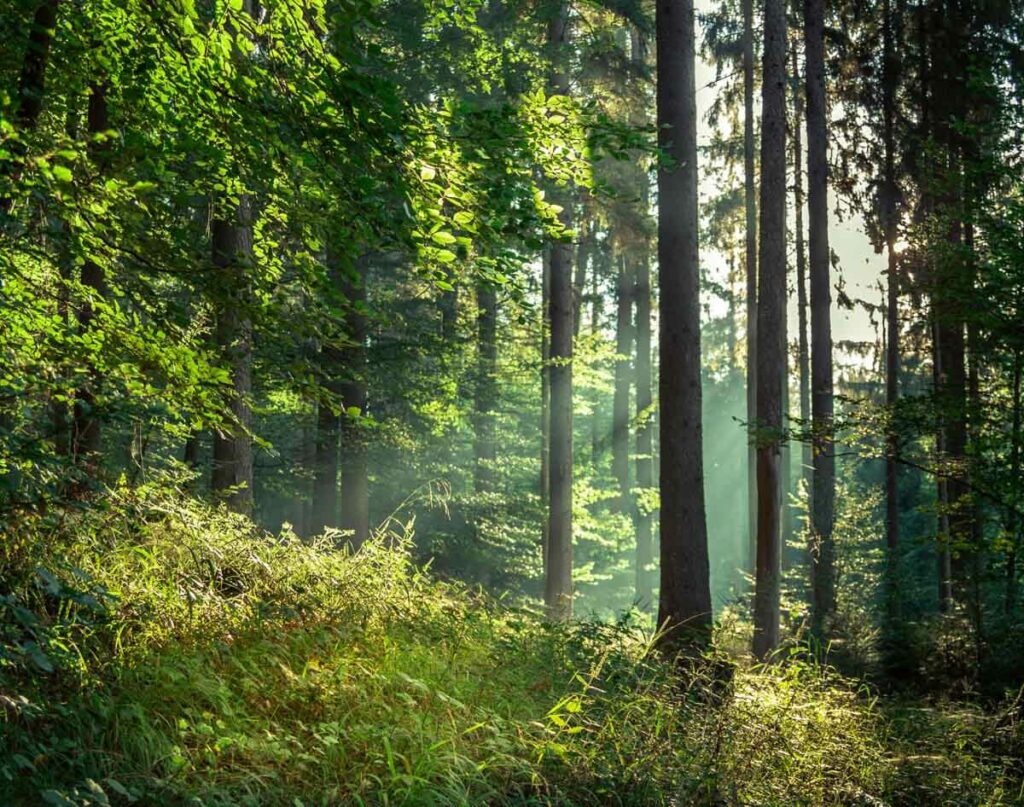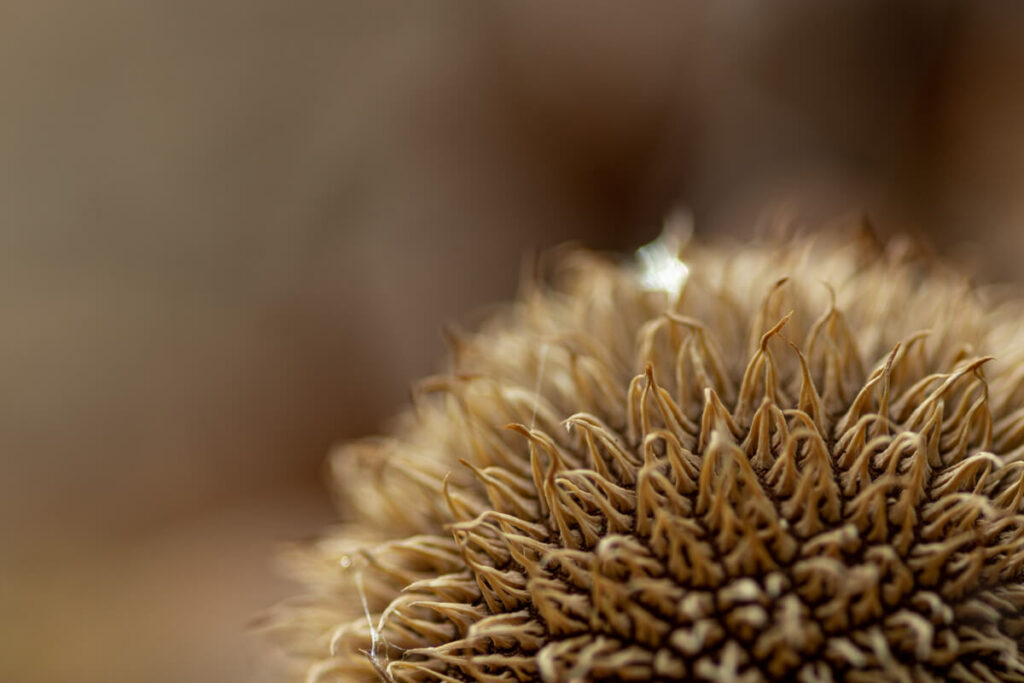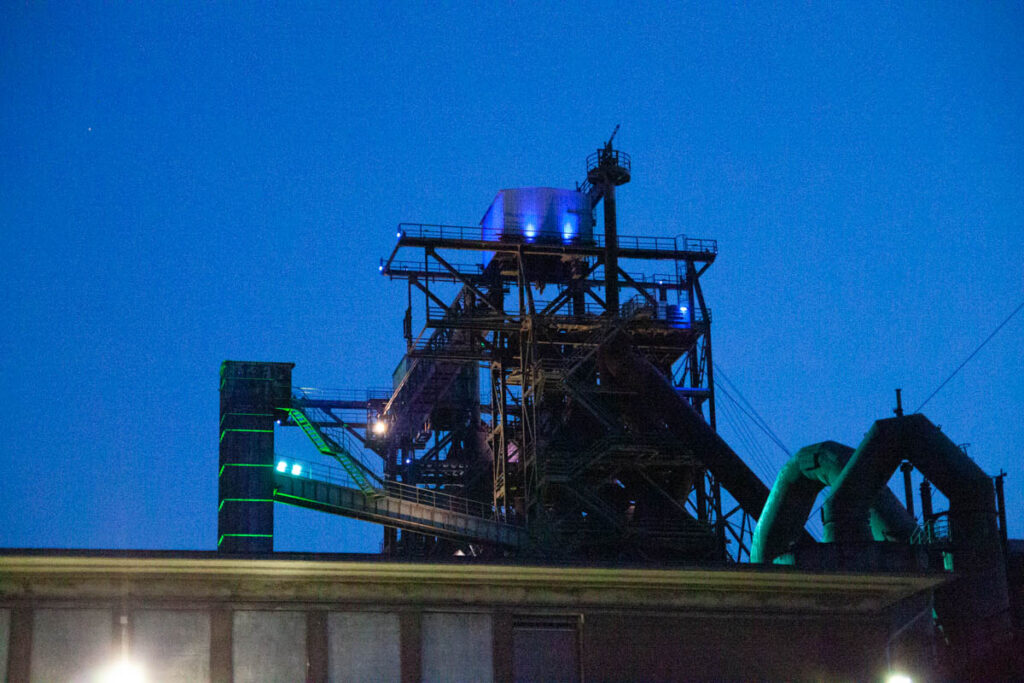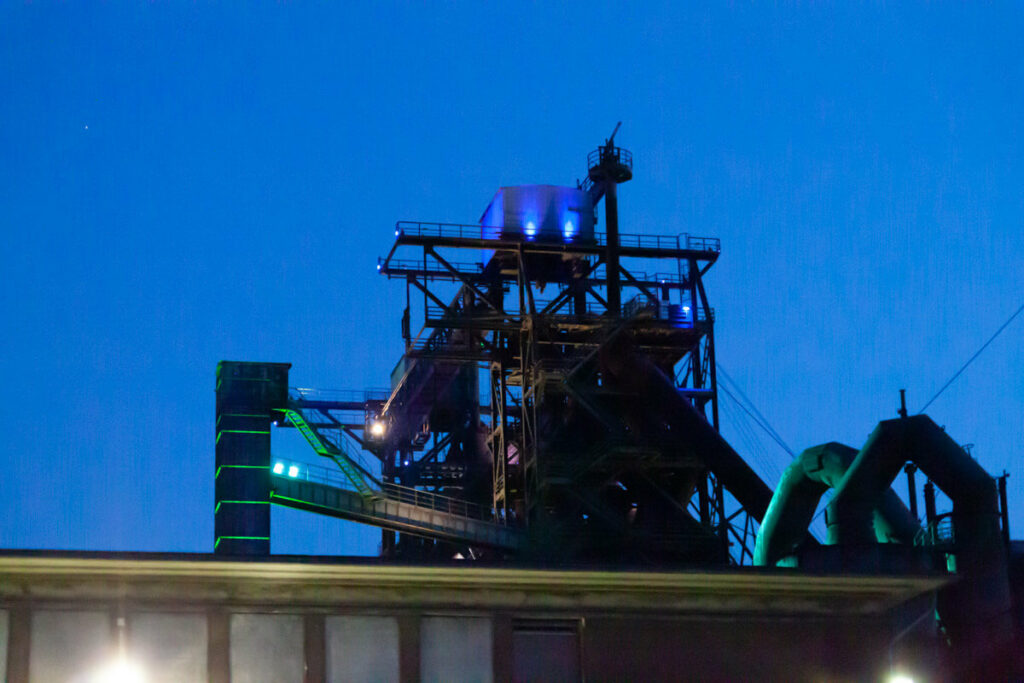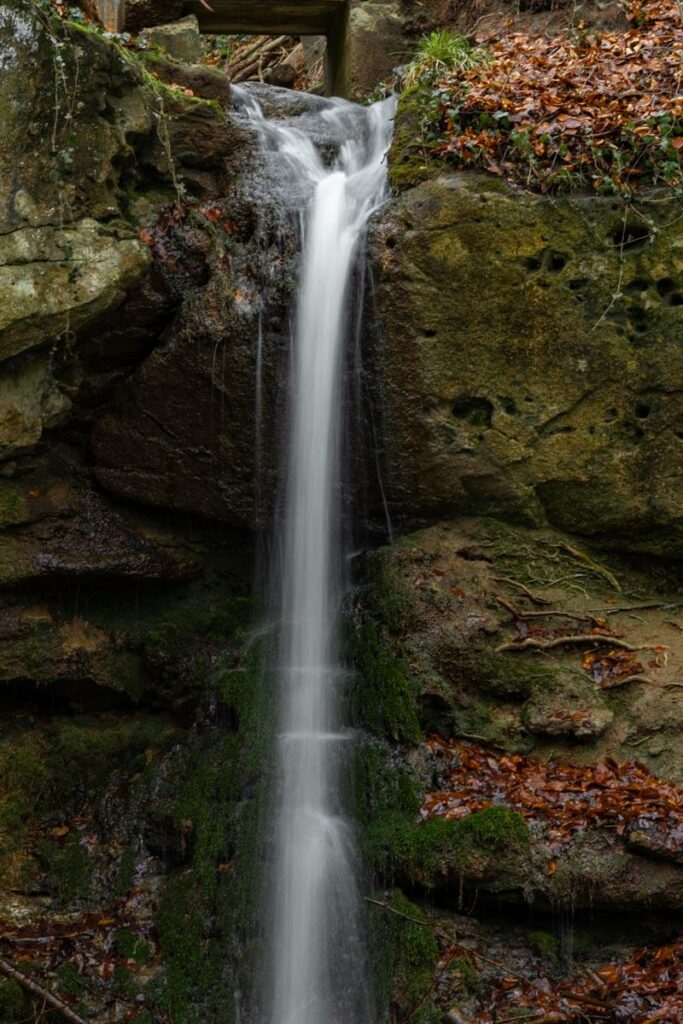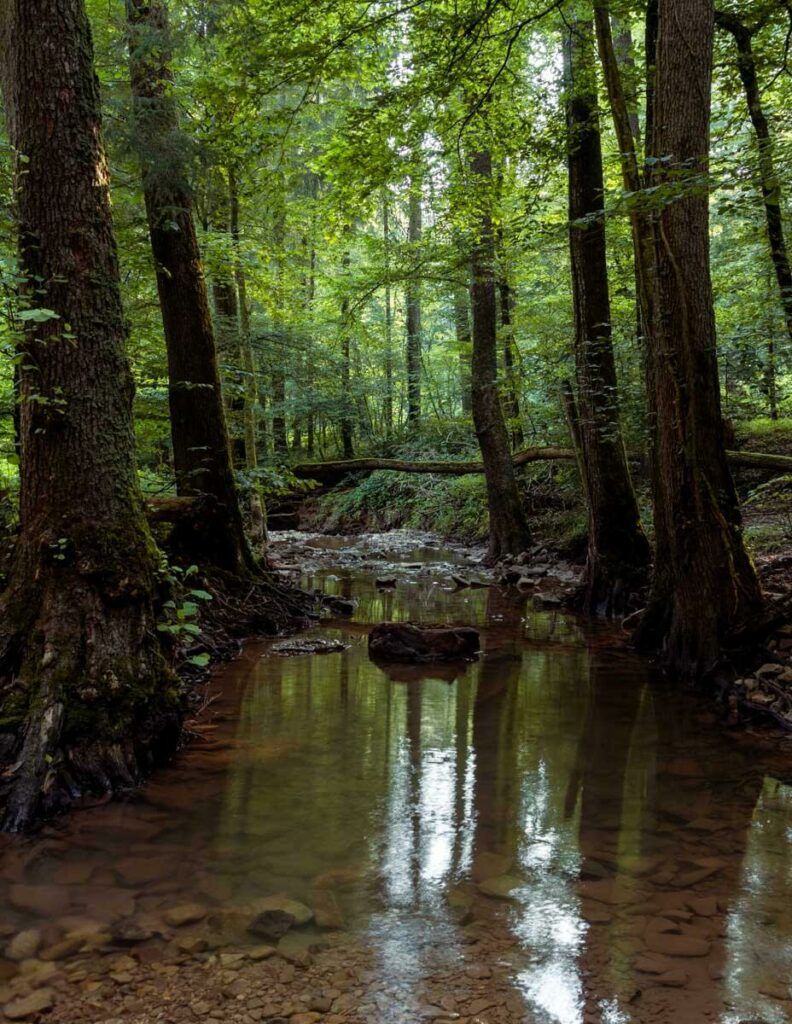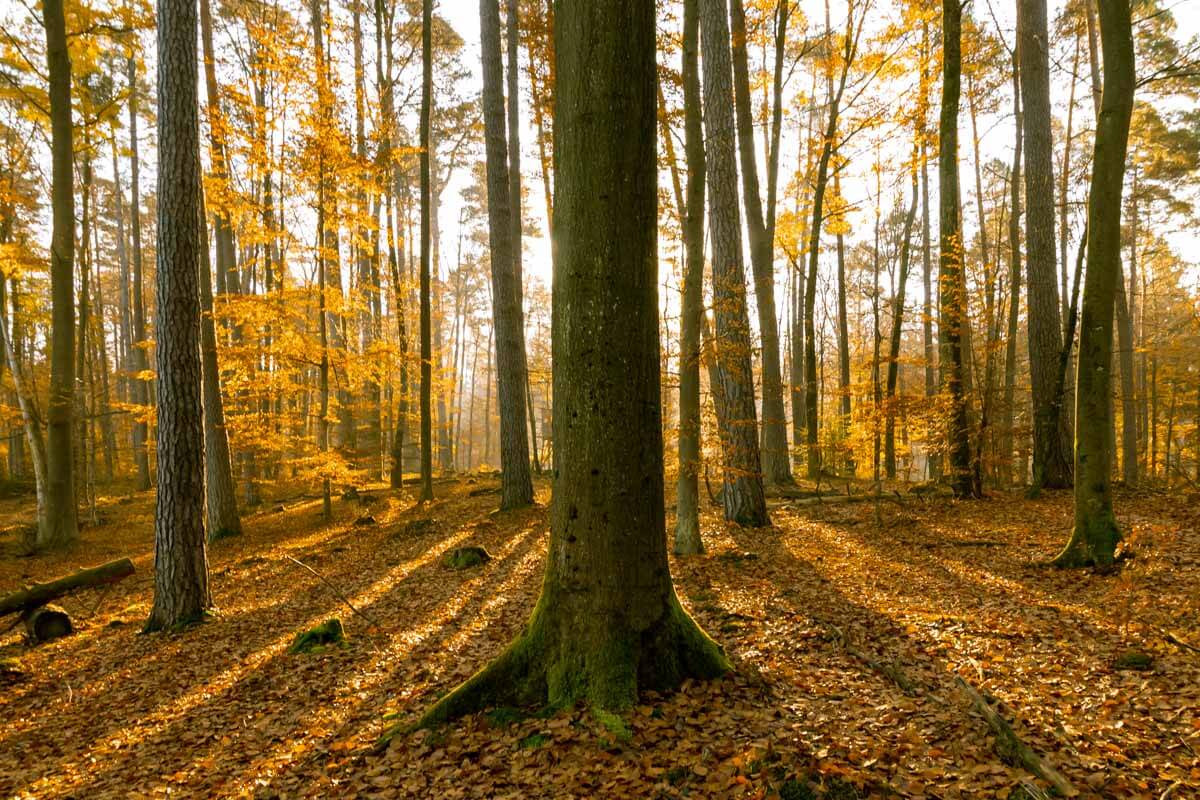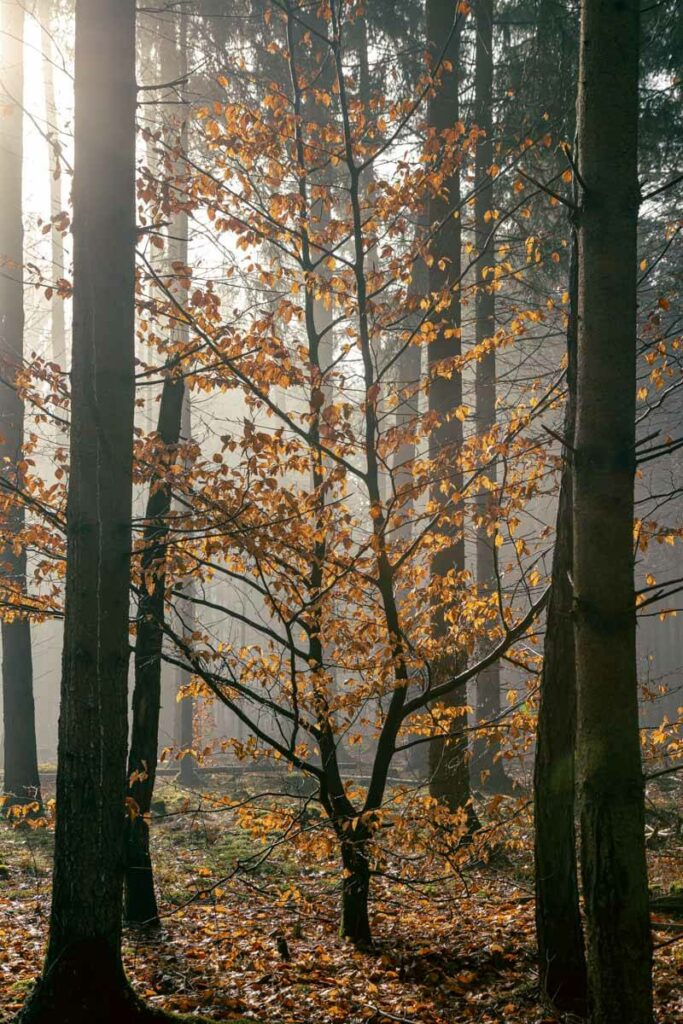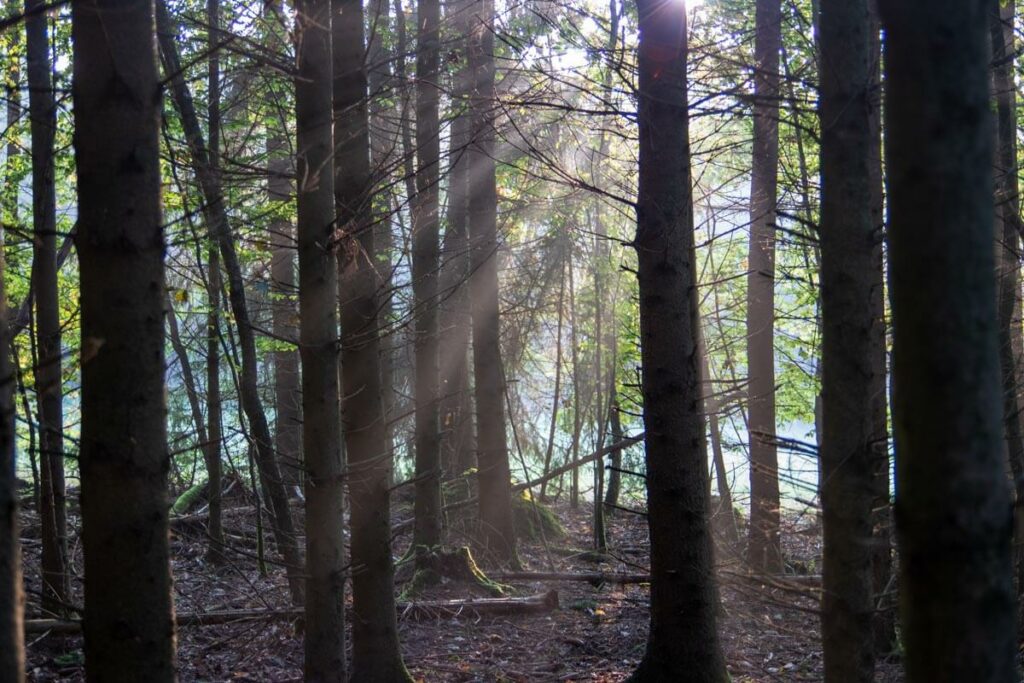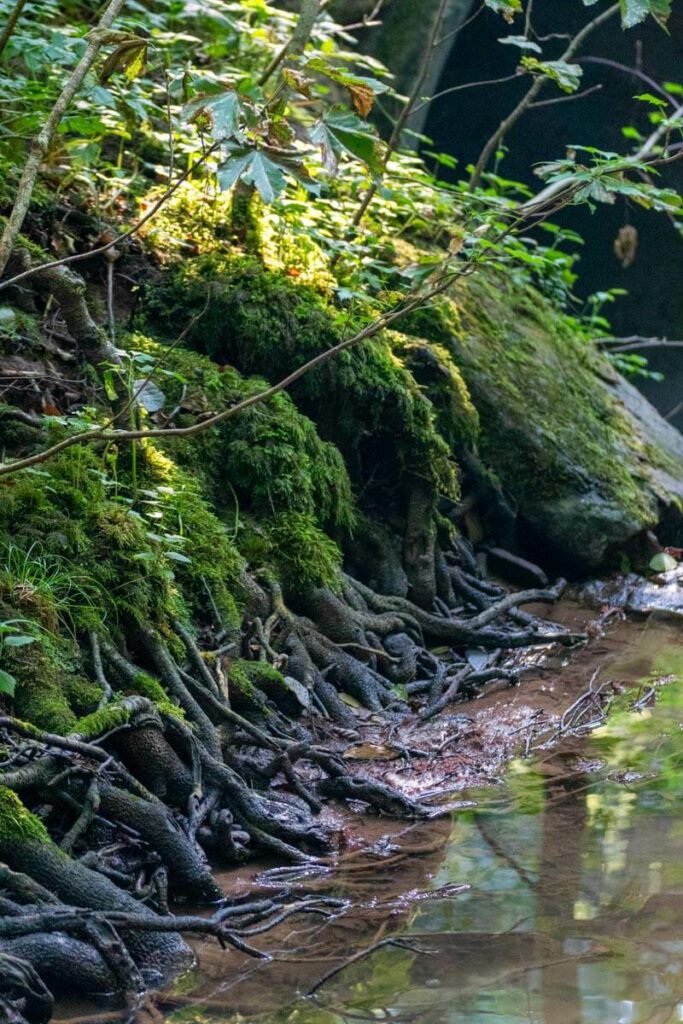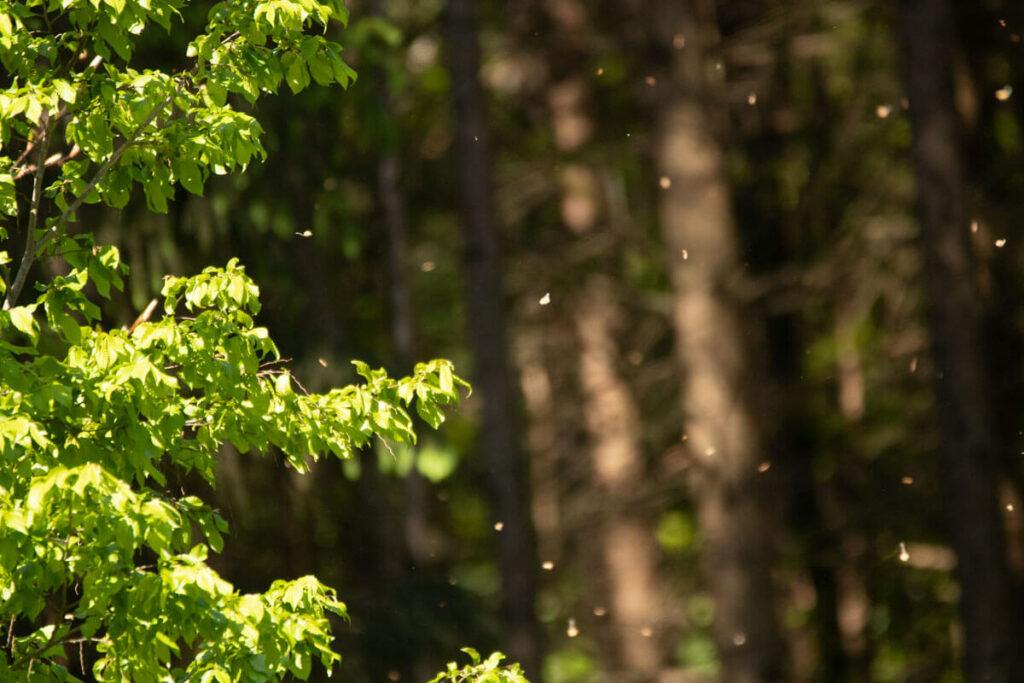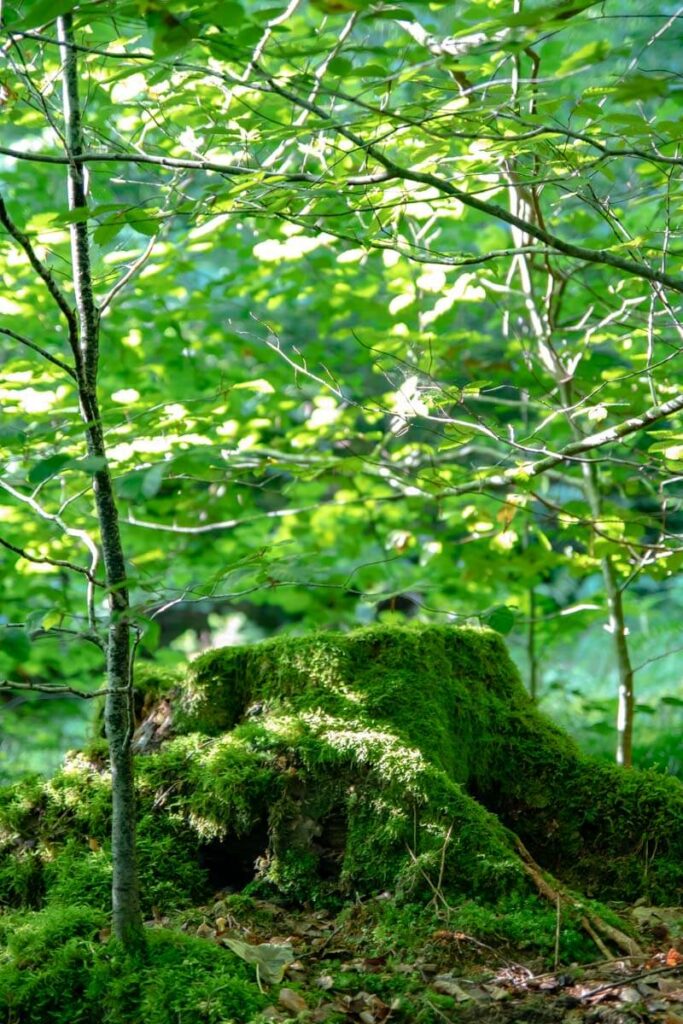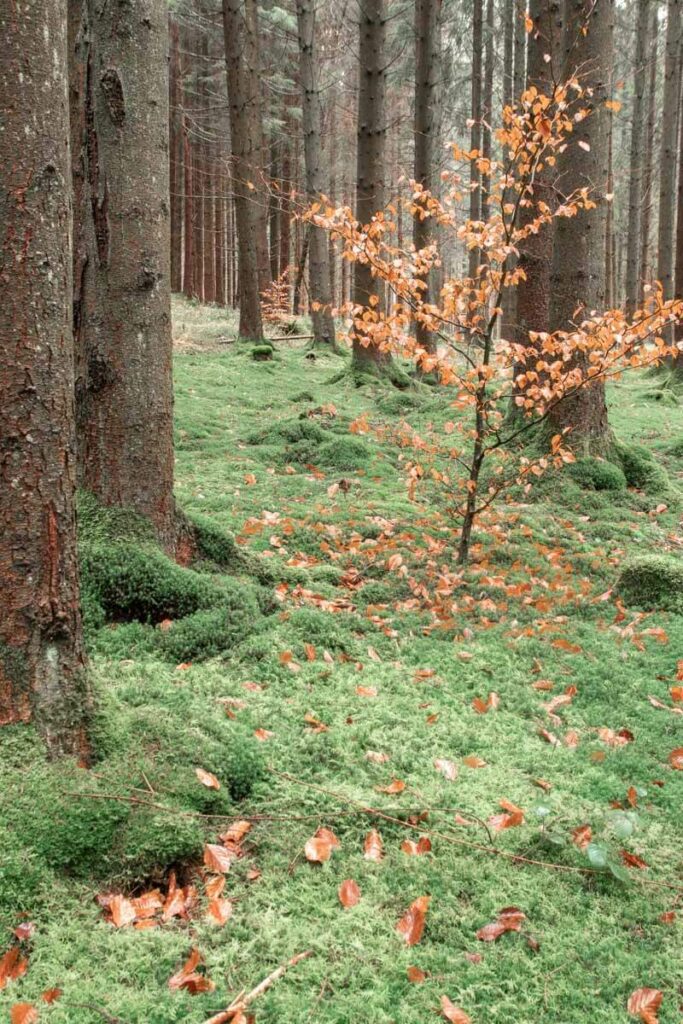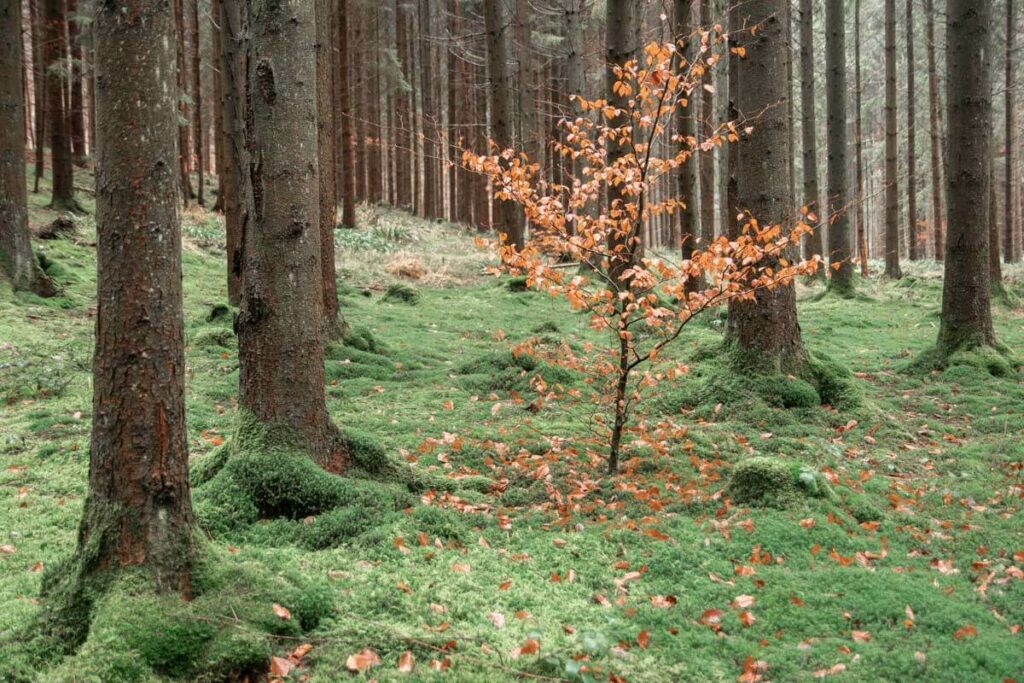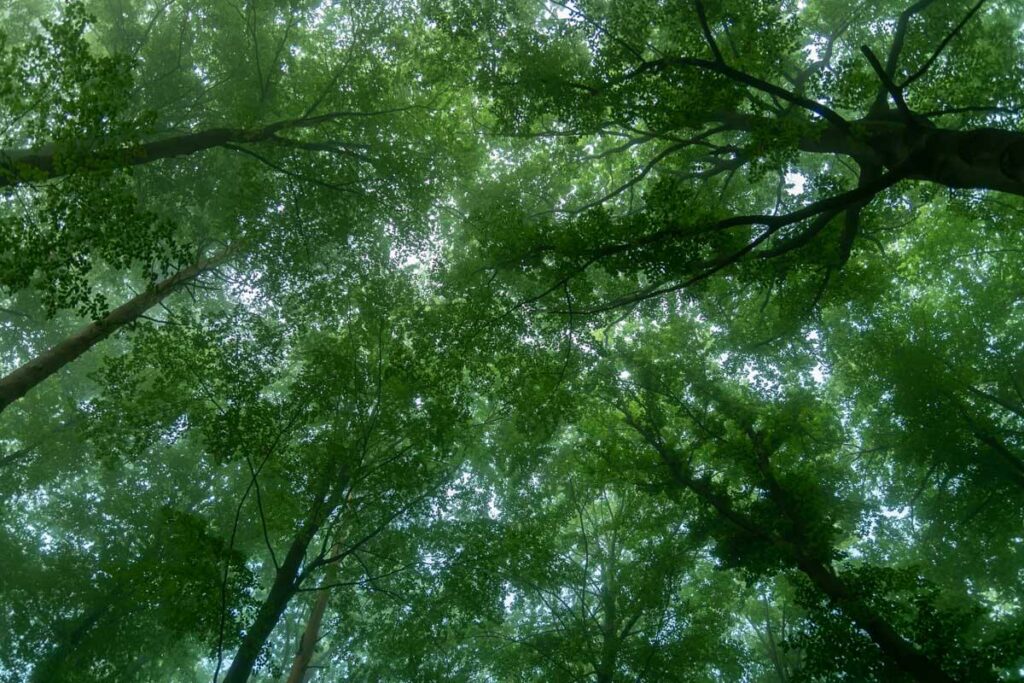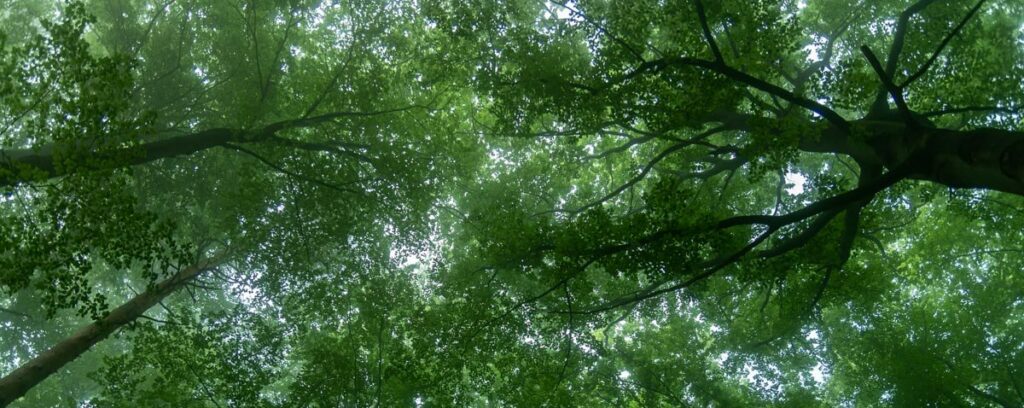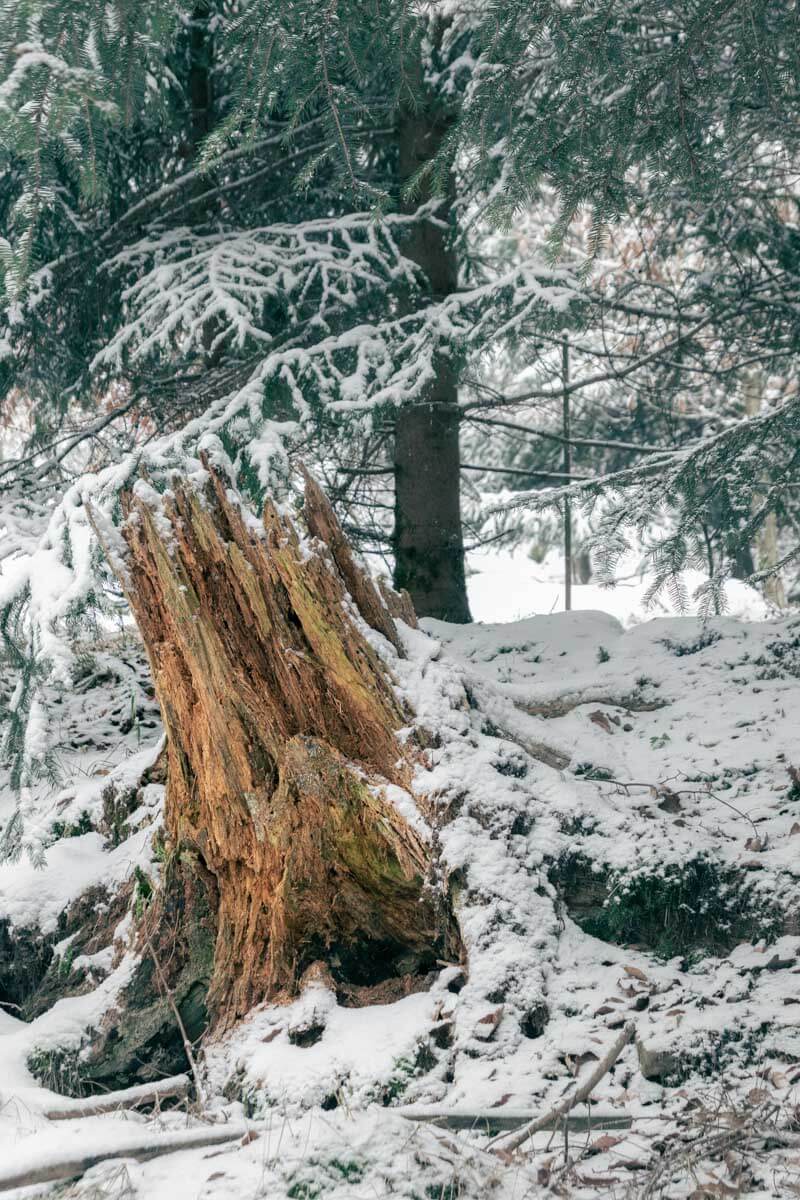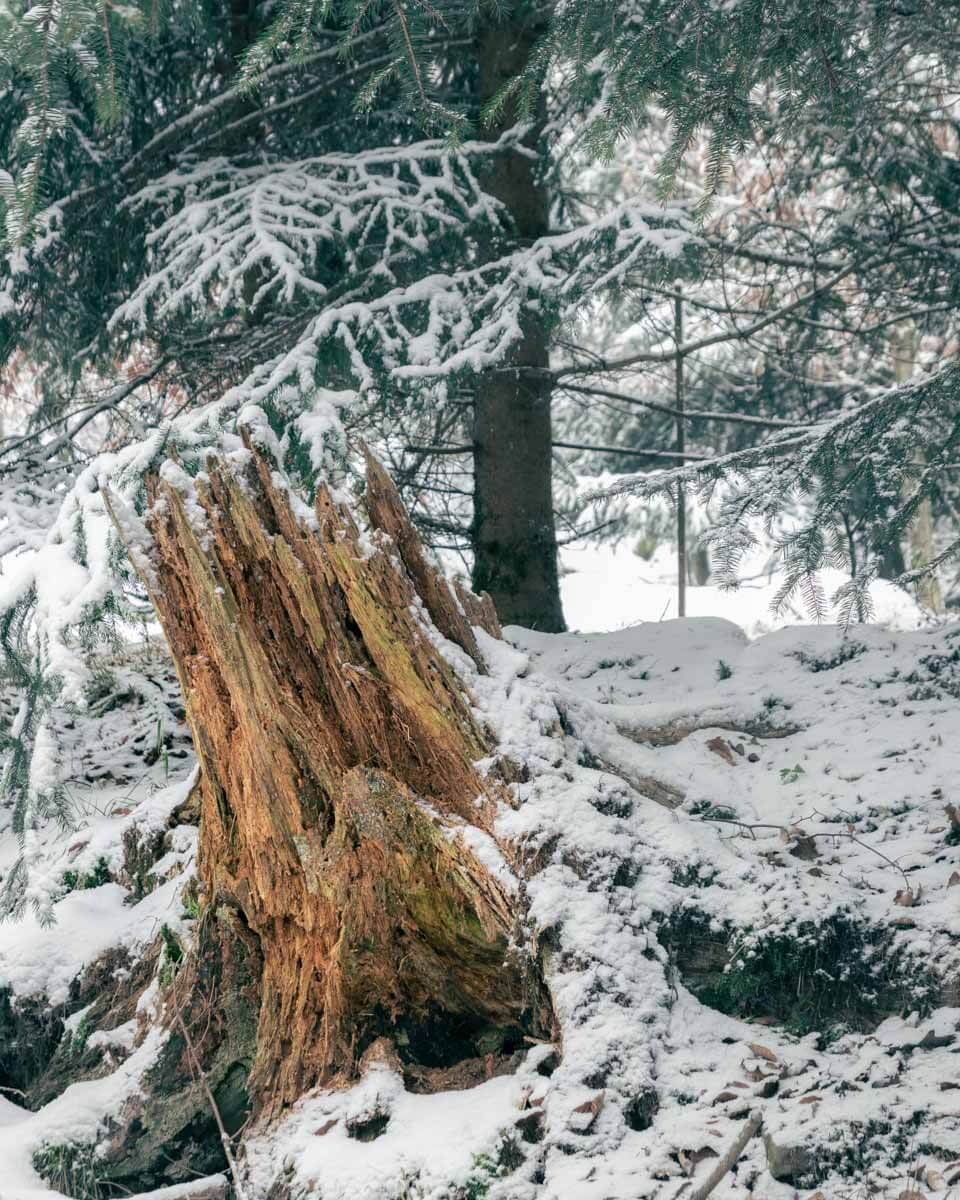Siberian cold! -14 degrees! Instead of lying in bed, I set out to photograph a frozen waterfall on February 13, 2021. To get the most beautiful pictures possible, with as few people as possible, I wanted to be there before 8am. But that also meant getting up at 5:30. Saturday. My way should lead me to the Hörschbachtal waterfalls.
Photographing in freezing cold
I have prepared myself well. A thermos mug full of hot tea packed, a little something to eat, scarf, hat and gloves. And the thick winter coat, which I had almost mothballed. Oh yes, my camera too, of course. Plus the tripod and a spare battery. It should be light, because I had first considered also to hike to the rear Hörschbachtal waterfall. Especially when it is very cold outside, it is important to have enough batteries with you. They empty faster than you can look.
I set off shortly before 8 o’clock. From the parking lot of the Vorderer Wasserfall in the Hörschbach Valley, it is only a few meters to the stream that flows into the waterfall. Everything is full of snow. Beautiful! The morning sun bathes everything in a bluish, cold light. A wonderful mood, which is enhanced by the frosty air. More info on how to get there and beautiful pictures of the waterfalls in spring can also be found here: “Hoerschbachtal Waterfalls in Murrhardt“.
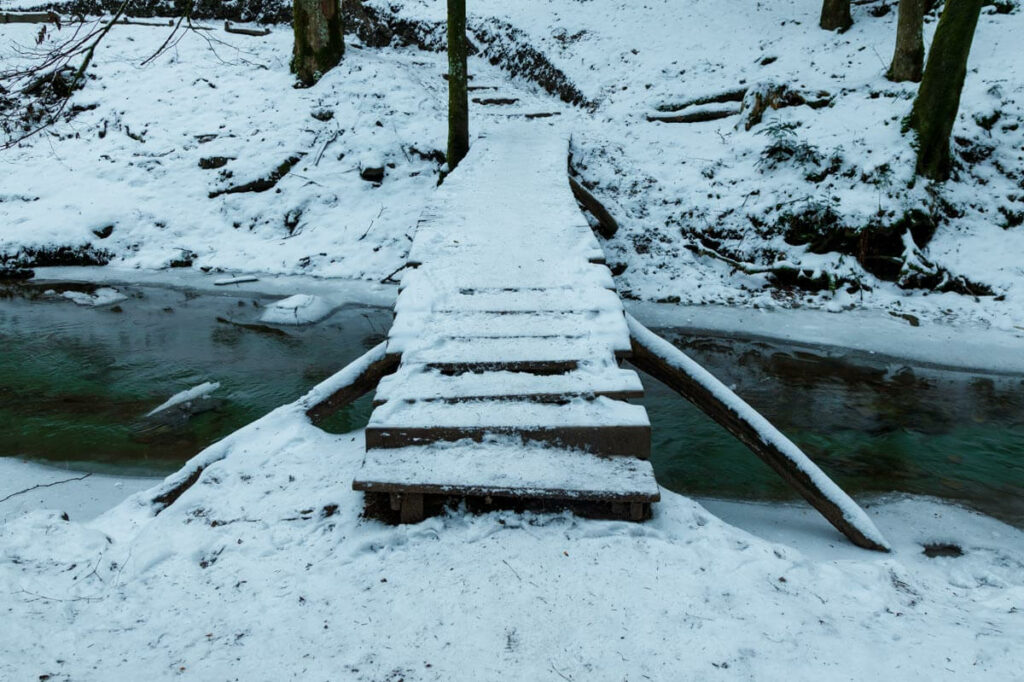
The small wooden bridge without railings does not look very trustworthy. Fortunately, it is not covered with ice, so that you can cross it safely. Deeply one would not fall anyway, but at -14 degrees that would be a cold awakening.
The descent to the front waterfall has it in itself. Much flattened snow. The path is not developed, only makeshift steps. Here you really have to be surefooted to descend in these conditions. But what does one not do everything for beautiful pictures? Besides, I put on my rain pants. So even if I would land on the Popo, it would be half so wild.
Frozen waterfall Hoerschbachtal
Slowly I climb down to the front waterfall. Due to the splashing water, there is a lot of ice here. I knew the Hörschbach Valley Waterfalls only from a trip in May. Now I seem to be in a completely different world. Icy blue. Icicles almost as big as I am. Leaning on my tripod, I slither down the last bit to the plain below the waterfall.
Another photographer is here, already daring the way onto the ice in the middle of the stream. Well, I now know where the ice is still too thin and I would also get wet feet. But everything will be fine, in the middle the ice is so thick that it could carry an elephant.
I enjoy the view of the waterfall. You don’t see something like that every day. Almost 5m the front waterfall falls over the step. Today, however, only little water arrives, most of it is frozen. Frozen to icicles.
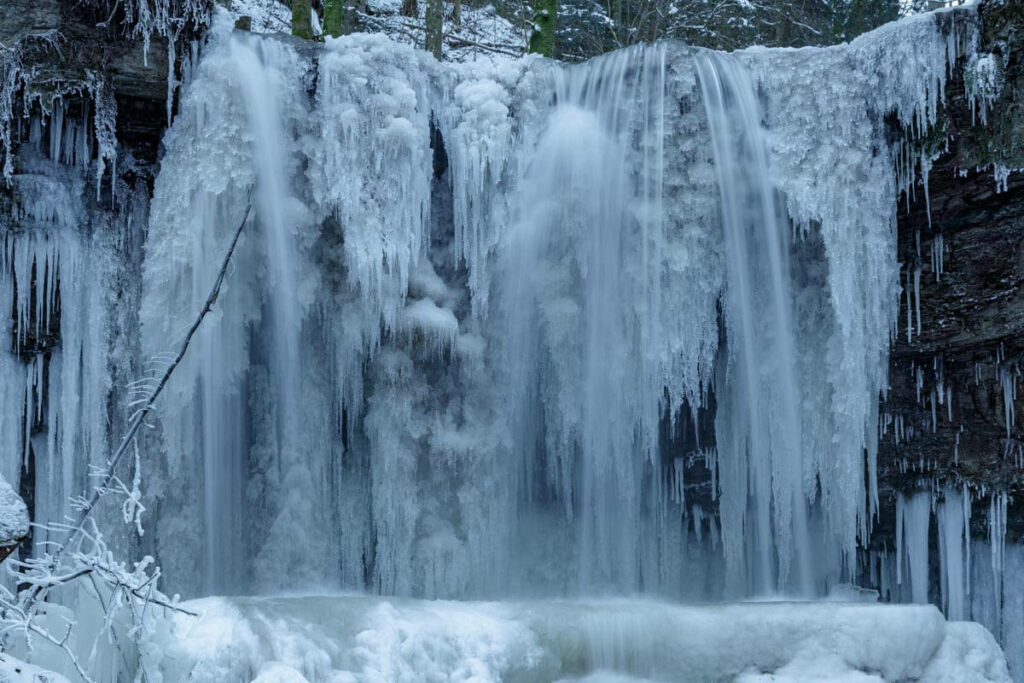
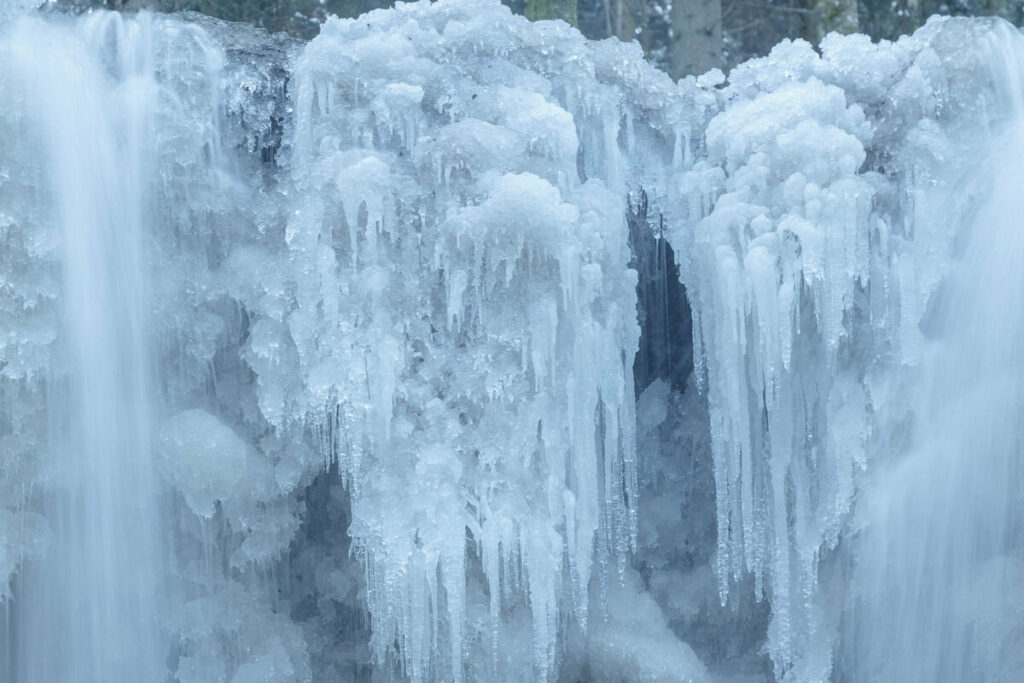
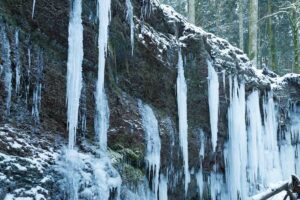
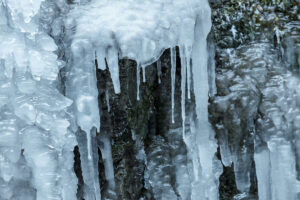
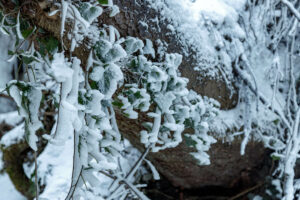
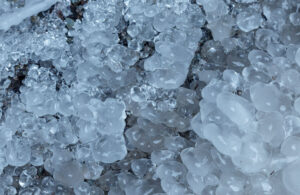
From here I have another great view of the frozen waterfall. Madness, how much ice is there! Meanwhile, more and more people come. It is not even 9 o’clock. What must be here only at 11 o’clock for a rush? I take some more pictures of the Vorderer Hörschbachtal waterfall and the bridge.
And my gaze falls on the icy stream bank. Before I move on, I take a closer look and find some very nice motifs here, too. Should I or should I not walk to the rear waterfall? The ice on my lens and the frozen legs of my tripod take me the decision. It is simply too cold. Now another 45-60 minutes of walking through the icy cold? The road is closed and the Hörschbachtalschlucht is out. So I would have to take the upper hiking trail.
From here I have another great view of the frozen waterfall. Madness, how much ice is there! Meanwhile, more and more people come. It is not even 9 o’clock. What must be here only at 11 o’clock for a rush? I take some more pictures of the Vorderer Hörschbachtal waterfall and the bridge.
And my gaze falls on the icy stream bank. Before I move on, I take a closer look and find some very nice motifs here, too. Should I or should I not walk to the rear waterfall? The ice on my lens and the frozen legs of my tripod take me the decision. It is simply too cold. Now another 45-60 minutes of walking through the icy cold? The road is closed and the Hörschbachtalschlucht is out. So I would have to take the upper hiking trail.
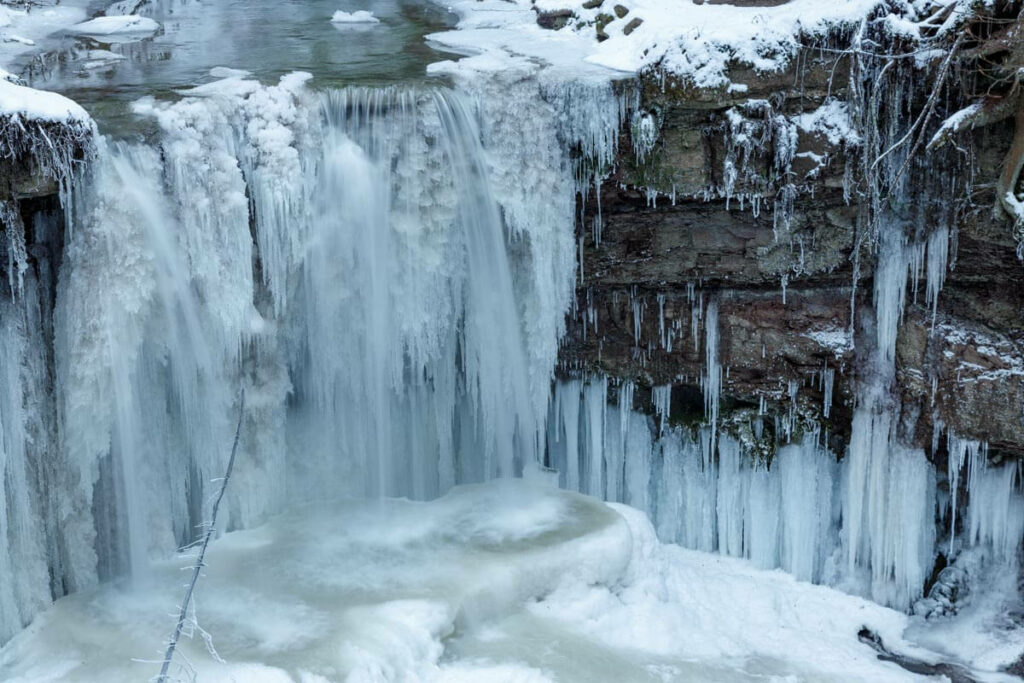
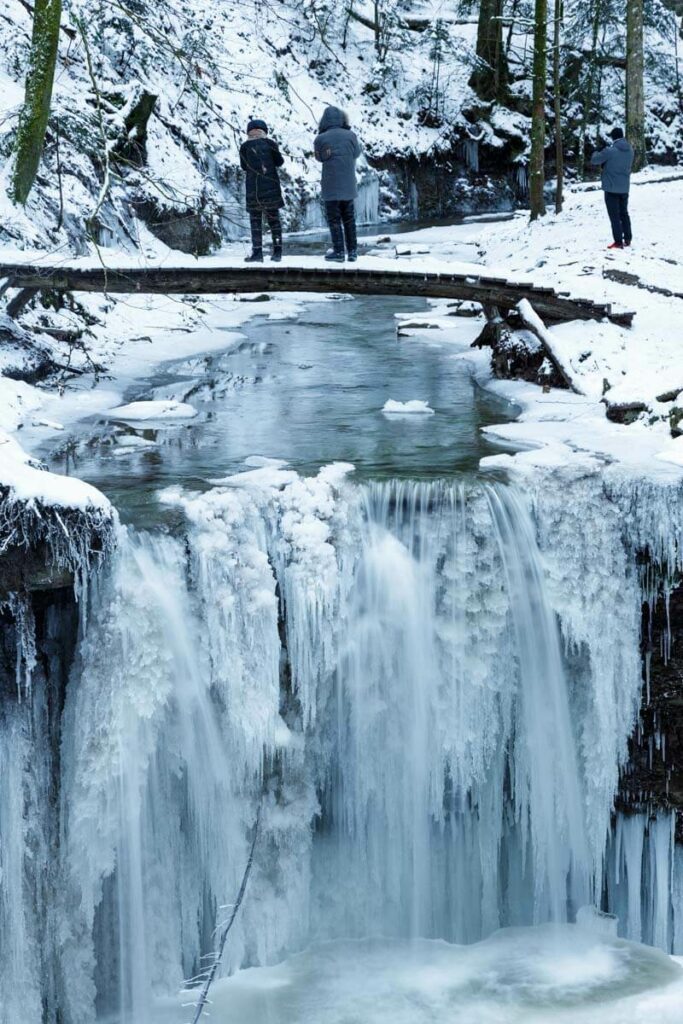
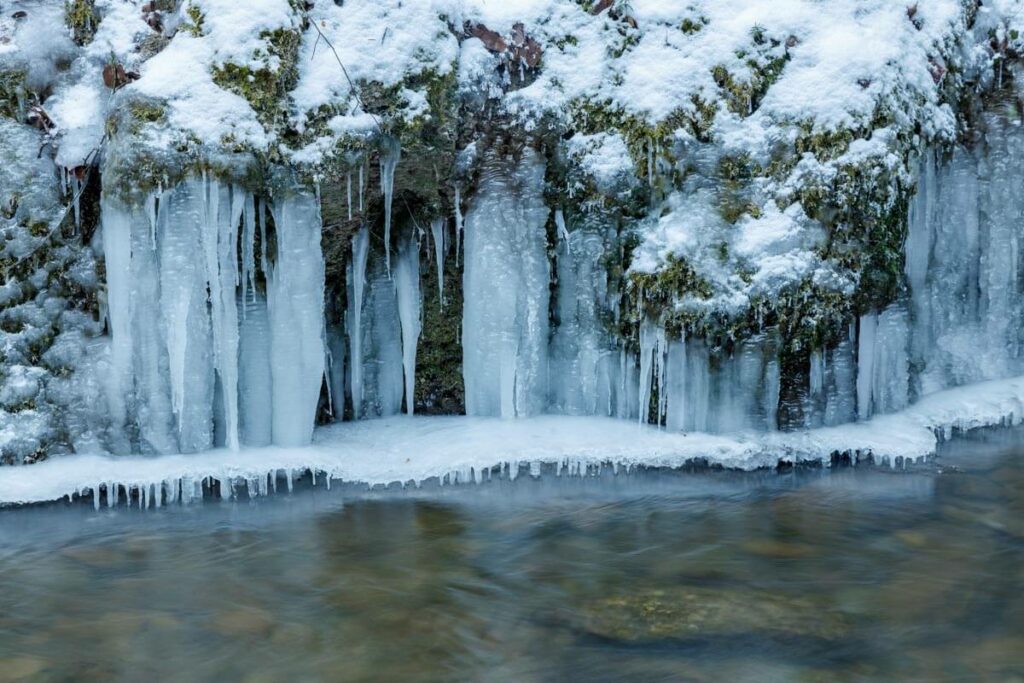
In addition, my tea supply is also coming to an end. One hour in the cold was enough. Even though I will miss some great pictures, I decide to go home again. But I will be back. At the next Siberian cold. Or in spring after an extensive rain, when the waterfall has a lot of water. For sure!
Have you ever seen a frozen waterfall? When and where was it? Let me know about it in a comment!
Best light wishes
Your Tanja
